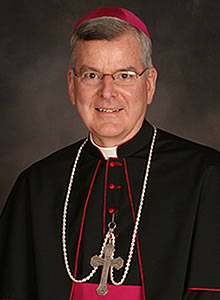
Recently, I was addressing a point on the unique understanding that we as Catholics have on the sacredness of the Holy Eucharist, when one of my listeners blurted out, “Well, why doesn’t the Church get honest and admit that her annulments are just another name for divorce!”
Surprised at the abrupt change of topic, I asked: “Do you understand the difference between civil marriage and sacramental marriage?” The man admitted that he did not. I regret to say that many other Catholics do not either and that is a terrible shame.
‘Marriage in the Lord’
Civil marriage is based on a contract or written agreement that this man and this woman freely bind their lives together as one social entity (originally this was the idea behind them taking one name). That contract continues as long as the two parties desire it to be so.
Civil governments have a stake in the outcome of such unions because they provide future social stability through the children who are born, educated and prepared for citizenship as a result of those contractual relationships. When the well-being of civil marriage is threatened, the future of the common good is placed at risk, and that ought to be of significant concern for governmental leaders.
Sacramental marriage externally looks just like civil marriage, but the internal reality is far different. Sacramental marriage rests on what I call the four pillars that give it definition:
- Faith-filled: It is a union between a baptized man and a baptized woman;
- Free consent: It is knowingly and willingly entered into by a man and a woman who understand what they are doing and have the capacity to follow through;
- Indissoluble: Both believers recognize that this is a lifelong, exclusive and monogamous union because it is a “marriage in the Lord”;
- Fruitful: Being believers, the couple models the generative love of God as seen in the Blessed Trinity in willing that their love for each other will bear fruit in the procreation and education of their children.
When we view the meaning of sacramental marriage over and against that of a civil marriage, we begin to understand why the Catholic Church defines the sacrament of marriage as a “covenant” — a union in God and dependent on his assistance of grace. Accordingly, divorce has no place in terms of sacramentality because God’s grace never dies even in the presence of human sin or weakness.
An annulment, on the other hand, results after careful consideration has been given as to whether or not all four pillars were present the day that the couple said their “I do’s.” If one or more dimensions were missing, then that union, which admittedly was a civil marriage, was never capable of being a sacramental marriage.
On the other hand, when two Lutherans are married in a Lutheran Church, the Catholic Church presumes they, too, have entered into a sacramental union due to the validity of their baptism. (The same understanding of validity does not, however, extend to a Lutheran theology of the Eucharist.) If they later divorce and one of the parties desires to marry a Catholic, his or her union would require an annulment before marriage to a Catholic could take place.
Some will say that all this is needless bureaucracy or “red tape.” However, the Catholic Church sees that the dignity of the human person requires respect for his or her public promise spoken through the wedding vows before a recognized religious minister and two witnesses. The Church in that sense is only holding each party to his or her word and thus defending the integrity of their promises.
In addition, the increasing number of marriages in our archdiocese between persons of “mixed religious”
backgrounds is a source of deep concern for me, precisely because a mutually unified understanding of sacramentality in many cases is not present and because a fully unified practice of faith is not possible.
In such instances, pastoral leaders must devote extra time and attention to ensure that these couples are prepared to face the inevitable challenges that will face their commitment.
Importance of children
Lastly, allow me to speak to the overall importance of the procreation and education of children in regard to the sacramentality of marriage.
The Second Vatican Council’s constitution, “Gaudium et Spes,” did not use the distinction of “primary” and “secondary” in referring to the two-fold significance of the conjugal act, namely its procreative and unitive significances. This has led some commentators to conclude that a conflict could arise whereby the procreative significance may legitimately be ignored in favor of the unity of the couple, thus rationalizing the immoral use of contraception or sterilization.
My bishop, John Cardinal Dearden (for whom I served four years as his priest secretary), served as the committee chair when that section on marriage was being drafted. He told me personally that the above interpretation was never intended by the Council Fathers. While the two ends are essential, they do not bear the same moral weight. The procreative intent of marriage has been its defining character “from the beginning.” (Genesis 1:28)
St. Paul speaks of marriage as a “great mystery,” a marvelous participation in God’s life and mission. It is a blessed vocation and a holy adventure, wherein a man and a woman entrust their hearts, their lives and their eternal destinies to one another. God is the silent companion in the living out of that commitment. Marriages flourish when that is understood and when God’s assistance is sought in daily prayer and Sunday Eucharist.



